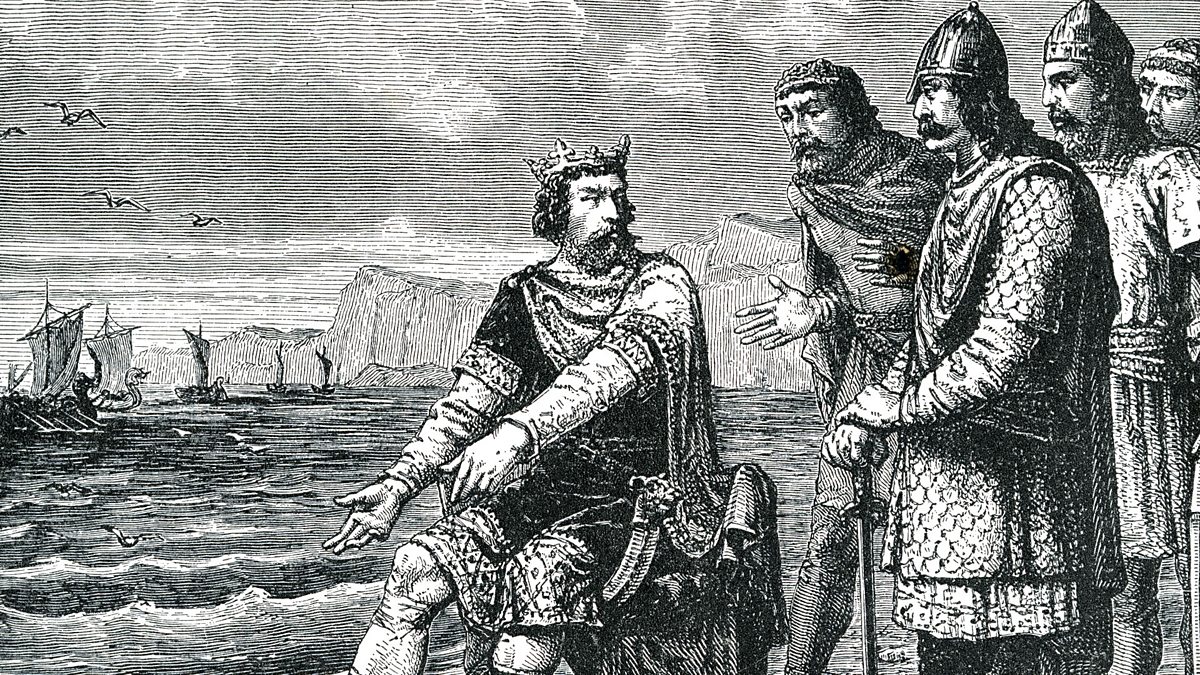See Southampton Heritage Guides – Sightseeing tours, tour guides and accessible tours
You Canute get enough of a good King!
Described by medieval historian Norman Cantor as the ‘most effective King in Anglo-Saxon history’ King Canute united the three kingdoms of England, Norway and Denmark, together referenced as the ‘North Sea Empire.’
Southampton had suffered Viking incursions in AD 980, 981 and 994, with payment of ‘Geld’ by King Ethelred supposedly ensuring that no further Viking attacks would take place. However, there was a subsequent raid on Southampton and the Isle of Wight in AD 1001, and further attacks in 1006 and 1012. Ethelred is said to have escaped via Southampton and the Isle of Wight to France, but returned following the death of the Danish King, Sweyn. On the death of Ethelred, Sweyn’s son Canute was in Southampton, where a gathering of the Witan gave its blessing to Canute’s rule.
The expansion of the town and its relocation to areas later enclosed by the town walls took full effect during the reign of Canute. Today nearby Winchester Cathedral is said to have the bones of King Canute and his son Harthacanute stored in mortuary chests, though over the years bones have been mixed up and moved around.
Place names referencing King Canute are many in Southampton. Canute Road runs appropriately past Ocean Village, and is home to the former Canute Hotel bearing the plaque ‘Near this spot AD 1028 Canute reproved his courtiers’.
The story of Cnut resisting the incoming tide was first recorded by Henry of Huntingdon in his Historia Anglorum (History of the English) in the early twelfth century:
‘When he was at the height of his ascendancy, he ordered his chair to be placed on the sea-shore as the tide was coming in. Then he said to the rising tide, “You are subject to me, as the land on which I am sitting is mine, and no one has resisted my overlordship with impunity. I command you, therefore, not to rise on to my land, nor to presume to wet the clothing or limbs of your master.” But the sea came up as usual, and disrespectfully drenched the king’s feet and shins. So jumping back, the king cried, “Let all the world know that the power of kings is empty and worthless, and there is no king worthy of the name save Him by whose will heaven, earth and the sea obey eternal laws.’
Could this event have taken place at Southampton? Other places dispute this version of events, with both Bosham in West Sussex and the City of Westminster rival claimants for the site of Canute wetting his robes!
Near to the Canute Hotel and on the opposite side of the road are Canute Chambers, once home to the White Star Line, and where families of the Southampton crew of the ill-fated Titanic gathered to find news of loved ones in April 1912.
Heading west on Porter’s Lane are the ruins of what is known as ‘Canute’s Palace’, today a Grade I listed building. The title ‘Canute’s Palace’ was given by the antiquarian Sir Henry Englefield, who conjectured in a paper in 1801: ‘Perhaps I indulge but a fond conjecture, when I consider it possibly the hall from which Canute, surrounded by his courtiers, viewed the rising tide; and from whence he descended to the beach, according to that most interesting narrative of our old historians, to repress by a striking and impressive lesson, their impious flattery’. Sadly for Englefield, the building was not a Palace but rather a merchant’s counting house constructed some 100 years after the reign of Canute between 1170 and 1200. Badly damaged during World War 2, Canute’s Palace, although roofless, still boasts an impressive appearance, with Norman windows and a reconstructed full-height gable at its western end.
In keeping with the nautical theme, the expansion of trade at Southampton’s Docks during the twentieth century saw the acquisition of a floating crane, named ‘Canute.’ This monster was constructed in Rotterdam in 1968 and had a maximum lift of 200 tonnes. Today Southampton continues to welcome many sea-going vessels from Scandinavia – all are warmly welcomed, unlike the longships from the days of Sweyn and Canute!

